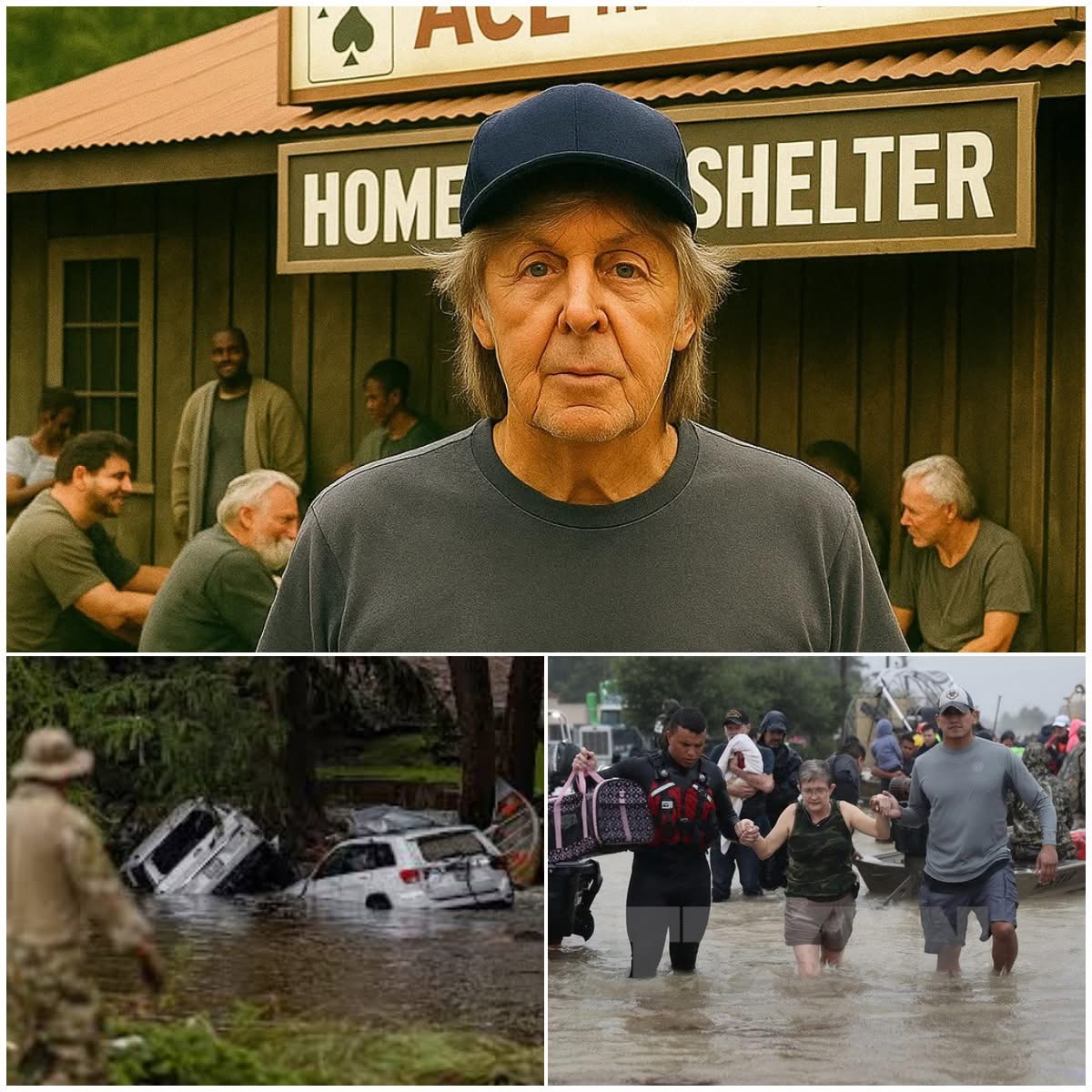In an act of quiet heroism that speaks louder than any stadium encore, **Paul McCartney** has turned a deeply personal piece of his past into a sanctuary for those most in need. What was once a dusty roadside honky-tonk bar where a young McCartney played small gigs has now become a lifeline—a shelter for over 120 people left homeless in the wake of the devastating Texas floods.
It’s a story not about fame, but about grace. And it begins decades ago.
### From humble stage to humble service
Long before he became Sir Paul, before the sold-out tours and global fame, McCartney spent nights strumming his guitar in a small Texas bar, earning just enough to get by. The building itself, weathered and worn, became a part of his musical journey—a place where songs and dreams took shape under dim neon lights.
Years later, when he quietly purchased that same roadside house, many assumed it was for nostalgia: a tribute to humble beginnings, perhaps to be restored as a private retreat or museum. But Paul McCartney had something very different in mind.
### A flood, and a decision from the heart
When record-breaking floods swept through parts of Texas, homes and lives were washed away in moments. Entire families found themselves with nowhere to sleep, no meals, and little hope.
Seeing this suffering moved McCartney to act. Rather than keeping the old honky-tonk bar as a monument to his past, he chose to transform it into something alive and urgently needed: a **shelter for the homeless**, offering not only food and beds but dignity, care, and compassion.
> “This isn’t about looking back,” McCartney reportedly told volunteers, “It’s about helping people move forward.”
### More than meals: food for the soul
Each day, the shelter welcomes dozens of flood victims—men, women, and children still shaken by loss. They receive warm meals cooked by volunteers, a safe place to rest, and, just as importantly, a sense of being seen and valued.
For many, it’s the first moment of peace since the waters rose. Children are given toys and books, parents find quiet corners to gather strength, and elderly residents share stories around simple tables that once held pints and dancehall laughter.
> “The meals are important,” one volunteer shared, “but it’s the kindness that really feeds them. That’s what Sir Paul wanted most.”
### A gift rooted in love, not publicity
In an age where celebrity charity often comes wrapped in press releases and photo ops, McCartney’s project has been quietly built away from cameras. Locals say he visits often, checking on repairs, meeting the families, and talking about what more can be done.
Instead of plaques bearing his name, the walls hold photos of the shelter’s residents smiling, rebuilding their lives. Instead of preserving the stage where he once performed, McCartney had it converted into a communal dining space where anyone can sit, eat, and belong.
### A shelter, a sanctuary, a symbol of hope
Beyond providing shelter and food, the old honky-tonk has become a symbol of something larger: that even after disaster, there can be rebirth; that even in a building once dedicated to music and drink, love can find new ways to resonate.
> “It’s a house of hope now,” said one resident. “Every meal tastes like someone cares.”
And for Paul McCartney, the act is more than charity—it’s a way to honor where he came from by lifting up those struggling now.
### The true measure of wealth
At its heart, this story isn’t about the floods, the music, or even the fame. It’s about the simplest and most powerful truth: **true wealth is not measured by what we keep, but by what we give away**.
From the ashes of disaster, Paul McCartney has helped build something stronger than brick and wood—a sanctuary where hope, dignity, and love find new life every single day. And in doing so, he reminds us all of the quiet power of compassion, and how, sometimes, the smallest places can become the greatest blessings.
